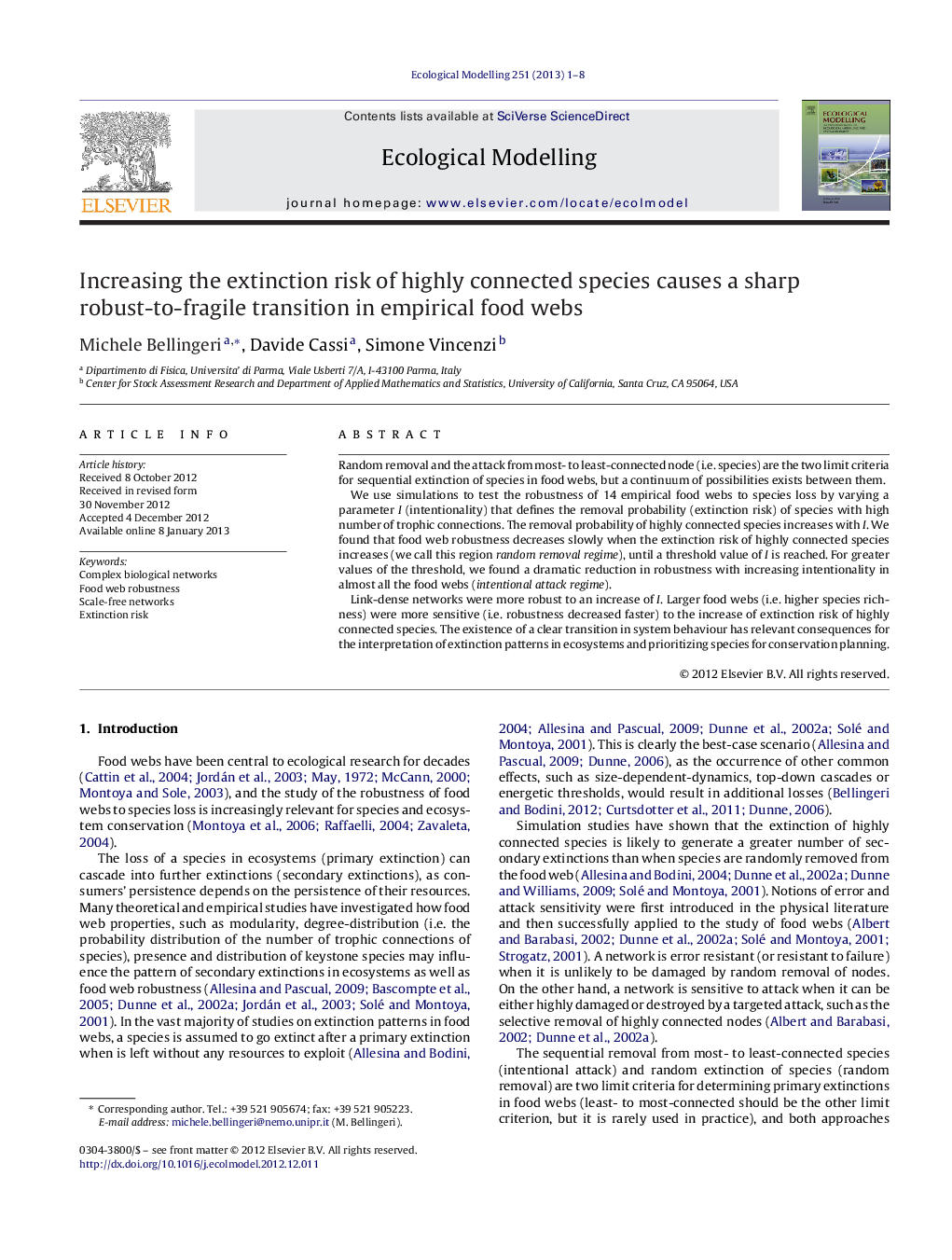| Article ID | Journal | Published Year | Pages | File Type |
|---|---|---|---|---|
| 4376136 | Ecological Modelling | 2013 | 8 Pages |
Random removal and the attack from most- to least-connected node (i.e. species) are the two limit criteria for sequential extinction of species in food webs, but a continuum of possibilities exists between them.We use simulations to test the robustness of 14 empirical food webs to species loss by varying a parameter I (intentionality) that defines the removal probability (extinction risk) of species with high number of trophic connections. The removal probability of highly connected species increases with I. We found that food web robustness decreases slowly when the extinction risk of highly connected species increases (we call this region random removal regime), until a threshold value of I is reached. For greater values of the threshold, we found a dramatic reduction in robustness with increasing intentionality in almost all the food webs (intentional attack regime).Link-dense networks were more robust to an increase of I. Larger food webs (i.e. higher species richness) were more sensitive (i.e. robustness decreased faster) to the increase of extinction risk of highly connected species. The existence of a clear transition in system behaviour has relevant consequences for the interpretation of extinction patterns in ecosystems and prioritizing species for conservation planning.
► We analysed food web robustness to species loss using stochastic simulations. ► The extinction risk of highly connected species increases with parameter I. ► Food web robustness declines sharply after a threshold value of I. ► Link-dense networks are more robust to an increase of I. ► Robustness decreases faster with increasing I in larger food webs.
